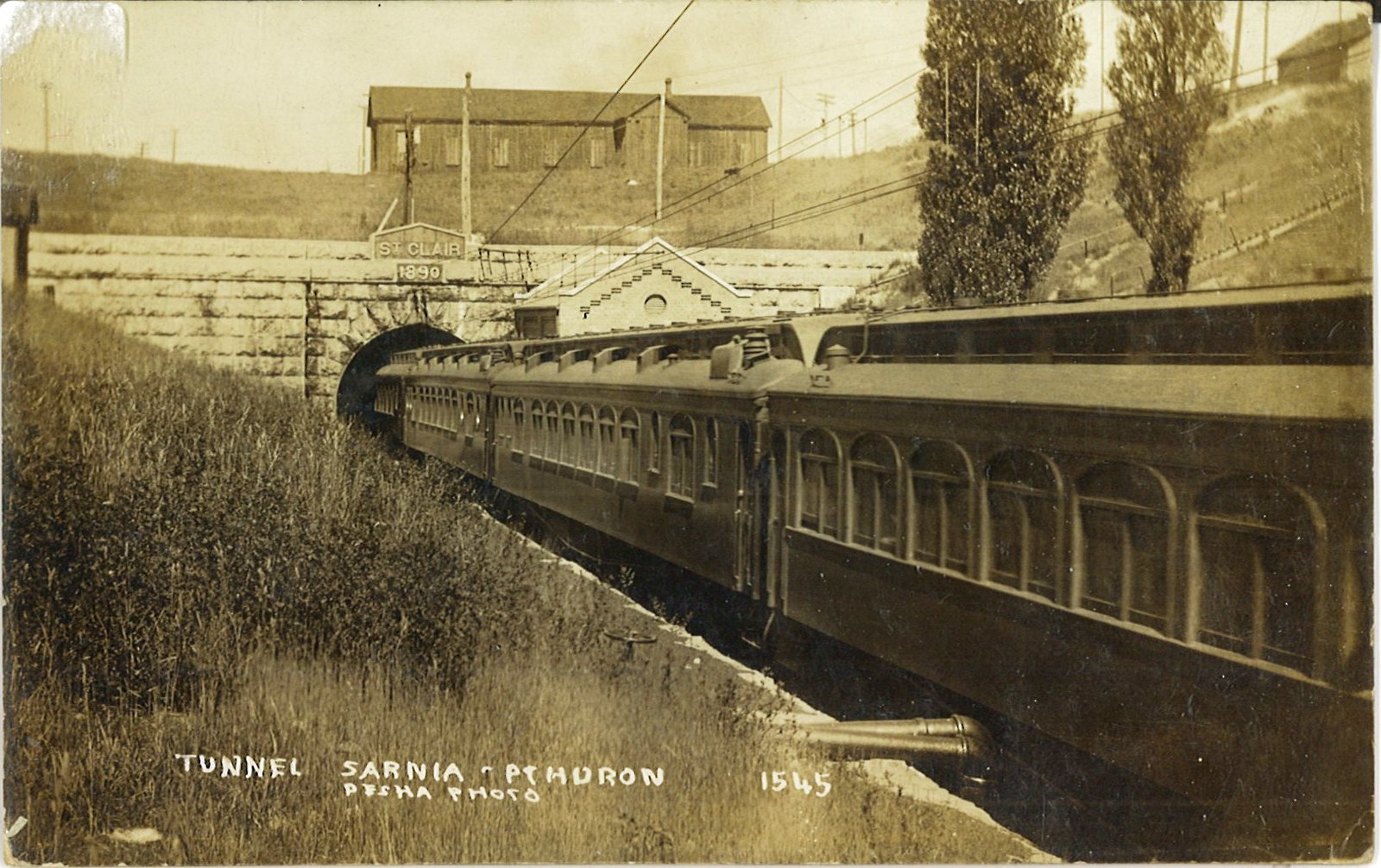By Phil Egan
At the time the St. Clair River Tunnel opened in 1891, it was considered one of the engineering wonders of the world. For decades thereafter, Sarnia was known as “Sarnia Tunnel” or “Tunnel Town.”
For many years prior to its opening, transborder trade between Canada and the United States in the Great Lakes region had been a source of tedium and frustration. Despite the fact that the Grand Trunk Railroad’s terminus in Point Edward was situated at the narrowest part of the St. Clair River between the two countries, the laborious task of unloading freight from rail cars onto a boat, and then unloading again onto freight cars on the opposite side, was slowing the movement of goods between suppliers and markets. The current there was also the swiftest, and ferries making the crossing had to contend with dodging watercraft departing and entering Lake Huron. The Grand Trunk decided to build one of the longest submarine tunnels in the world. The St. Clair Tunnel Company was created on November 9, 1886.
For the 700 men employed in constructing the tunnel, the work was exhausting, hazardous, and seemingly never-ending. Toiling with mules, shovels, picks and a derrick powered by a 50-horsepower hoisting engine, workers on both sides of the river dug towards one another beginning in 1889.Work went on for thirteen months, 24 hours a day, seven days a week. The pioneer drillers had to handle gas pockets, water leaks and quicksand. The tunnel was literally dug by hand. They started by using shovels and spades but these would bend, and the blue clay was so sticky that they had to scrape it off each shovelful.
By August 23, 1890, the two excavating shields on the Canadian and American sides were only fifteen feet apart. Tunnel legend states that an auger hole was drilled and a piece of chewing tobacco was passed through the opening, making this insignificant piece of merchandise the “first freight” to pass through the 6,025-foot tunnel. Two days later, an opening was shoveled through and Chief Engineer Joseph Hobson walked through. A signal was given and every whistle in Sarnia and Port Huron was blown in celebration. They had plenty to cheer about. After passing through thousands of metres of clay, the two hydraulic tunnelling shields used by the workers were a scant quarter of an inch out of alignment.
Ceremonies heralding the opening of the St. Clair Tunnel began on September 18, 1891. The following day, as cheering throngs lined the tunnel banks, a ceremonial train carried dignitaries through the tunnel, emerging three and a half minutes later on the Port Huron side of the river. Revenue traffic began flowing through the tunnel the following month.
Sadly, the tunnel came with a fearful price. Three workers died building it and several railroad workers were asphyxiated by choking fumes before steam engines were replaced by electric locomotives in 1904. But they had built a tunnel that lasted until almost the end of the 20th century. In fact, when it was replaced in the late 1990s, the old tunnel was still in perfect operation. A new passageway had only been built because the original couldn’t accommodate double-stacked train cars.
The project put Sarnia on the map. The St. Clair River Tunnel is nationally significant as the first full-size subaqueous tunnel built in North America. Prior to its completion, a railroad had never been able to pass beneath a river.


